What can postwar monuments teach us about the role of architecture in shaping nations’ memories?
To honour the sacrifices made during the Second World War, concrete sculptures were erected across what was then Yugoslavia. Today they stand as stark reminders of a history that must not be repeated.
To encounter a spomenik is to experience design’s ability to foster a state of contemplation. Dotted throughout the former Socialist Federal Republic of Yugoslavia, these concrete or steel memorials are often monumental in scale, brutalist in style and symbolically abstract. They resemble relics from a dystopian future or the result of a time warp that took place exclusively in what is now Bosnia and Herzegovina, Croatia, North Macedonia, Montenegro, Serbia and Slovenia.
Spomenici – Serbo-Croatian and Slovene for “monuments” – were built between the 1950s and 1990s as Second World War memorials. They commemorate unspeakable horrors: a period of occupation by Axis powers, mass killings and the imprisonment of political opponents (partisans and communists), and a genocide committed against ethnic Serbs, Jews and Roma people. In the decades immediately after the war, the question of how to acknowledge this history while forging a path forward resulted in a nationwide programme to build spomeniks – from the mountains of Montenegro to the Adriatic coastline of Croatia. Though precise numbers are unknown, it is estimated that between 20,000 and 40,000 structures were erected as part of this state-led effort under the administration of Josep Broz Tito, the Yugoslavian communist revolutionary turned dictator.
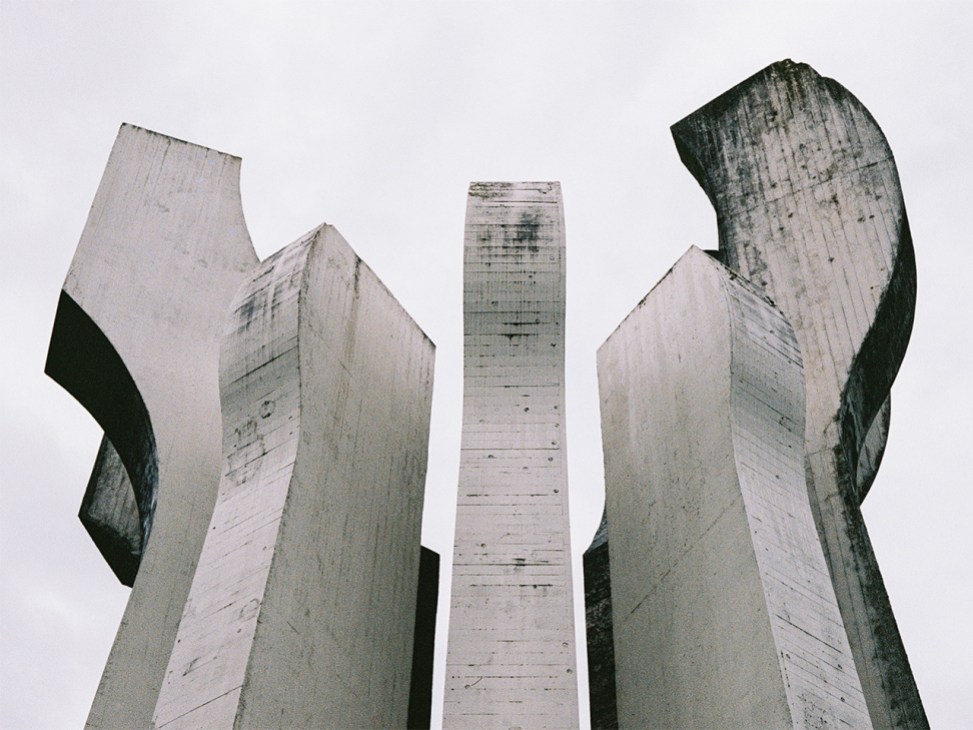
While the principal purpose of these spomeniks was to preserve memory, the programme was equally an exercise in manifesting the spirit of a new nation, defined by the socialist values of unity, equality and welfare for all. The process of selecting designs for these monuments involved competitions organised by regional and local authorities; for many young architects, being chosen to build a spomenik represented opportunity.
“It was a period ablaze with enthusiasm,” says Ljubljana-based architect Marko Mušic. “We were able to realise our architectural visions – and all of the participants were fuelled by the prestigious nature of the task.” Now one of Slovenia’s most revered designers, Mušic launched his career in the 1960s working on commissions to build memorial complexes (spomen-doms) in the towns of Kolašin, Bitola, Bosanski Šamac and Nikšic. “Though I was only in my twenties at the time, the political representatives who led these projects would respect the architect’s authority,” adds Mušic. “Sometimes, we even had the privilege of purchasing foreign products, which was otherwise prohibited by law in those days – for example, the large, dark-blue glass panels for Nikšic.”
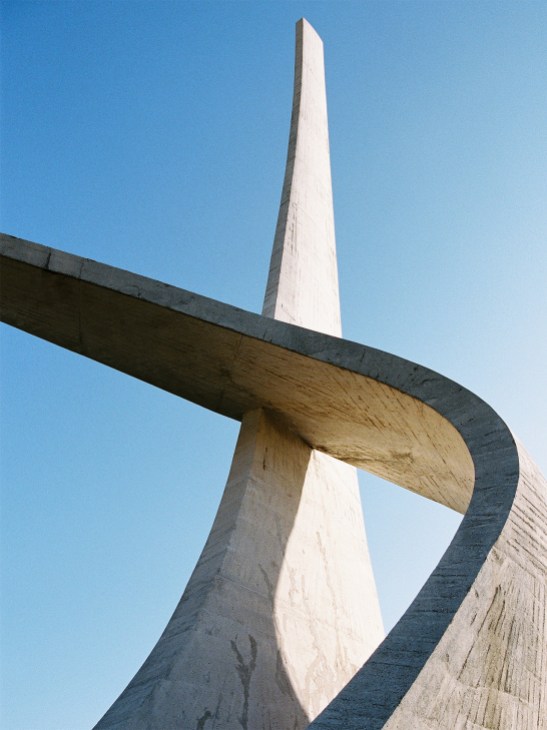
By involving regional authorities, the spomenik programme encouraged the disparate identities that existed within the borders of Yugoslavia to come together. Though the events that are commemorated all took place during the Second World War, what a specific spomenik honours varies widely. In Croatia’s Brezovica forest, the Sisak spomenik is an ode to the elm tree that sheltered a meeting of the partisan youth brigade that took place there. The winged monument in Tjentište, in Bosnia and Herzegovina’s Republic of Srpska, sits dramatically on the crest of a hill where Tito outsmarted German battalions by escaping through the mountains during the 1943 battle of Sutjeska.
Elsewhere, history is harder to confront. Serbian architect Bogdan Bogdanovic’s Flower Monument in Jasenovac, Croatia, sits on the site of a former concentration camp run by the Ustaše militia of the Independent State of Croatia. Instead of literal depictions of the pain and suffering that took place on these grounds, Bogdanovic opted for a stylised flower that recalls a lotus – a symbol of forgetfulness in Greek mythology but also awakening in Buddhism and Hinduism. The towering concrete lotus possesses an unexpected gentleness. But leading up to the memorial is a path made from railway sleepers repurposed from the track that carried those facing their death to Jasenovac.
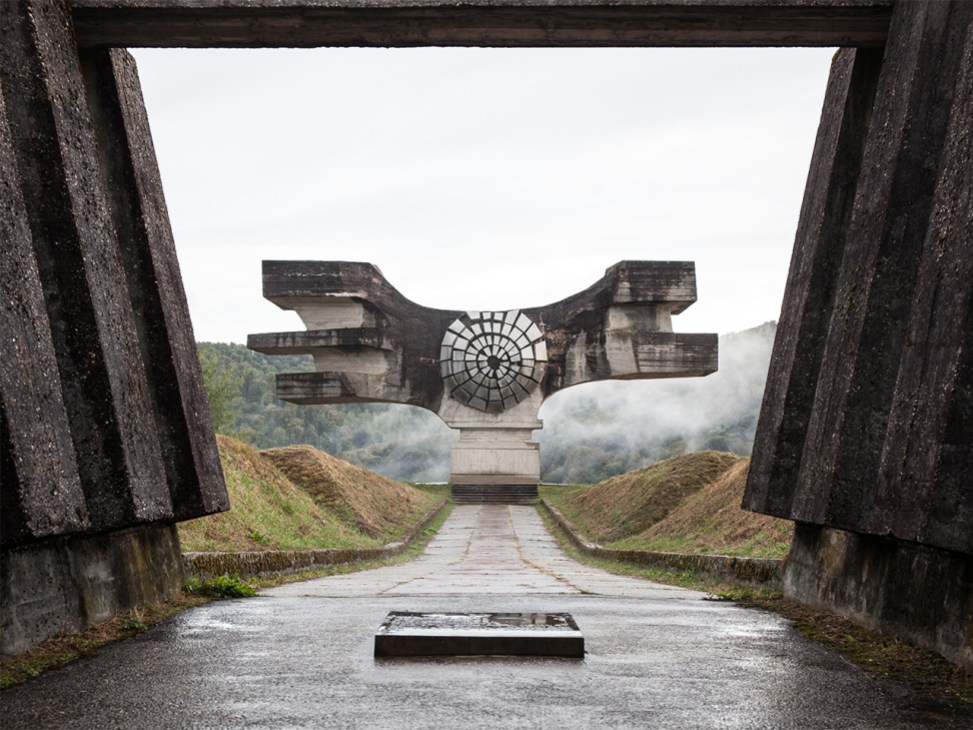
Sometimes, a museum or an archive accompanies a spomenik. Many of the structures were intended as spaces for education, hosting vigils, events or school trips in an effort to pass down stories of the war to the next generation. In some cases, such as at Petrova Gora in Croatia, little remains of this educational component. Others are better maintained, though most spomeniks display the unforgiving signs of time, exacerbated by the chaos of the Yugoslav wars. At times you see efforts to cover graffiti with white paint; at other times not.
For contemporary visitors, these structures have a tragic undercurrent. They were erected to ensure that the horrors of the Second World War would never happen again – but history repeated itself in the 1990s with further bloodshed. After Yugoslavia’s implosion, the spomeniks became almost dormant, artefacts from a failed social experiment. The focus shifted from unification to the redrawing of borders.
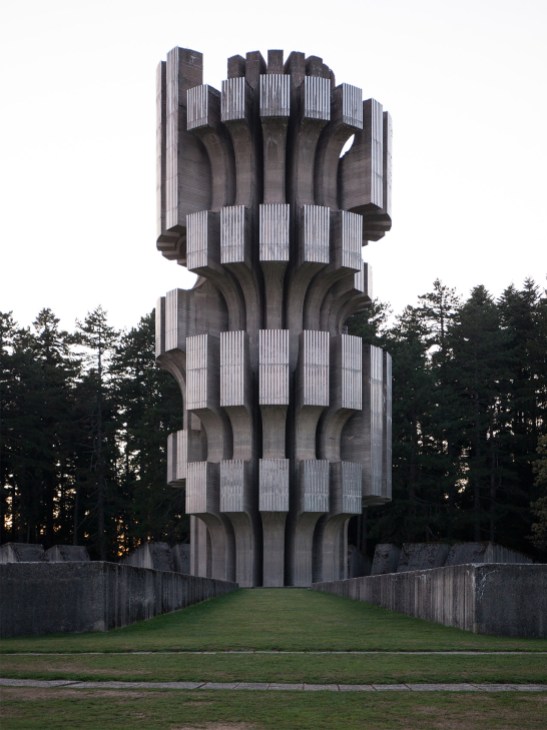
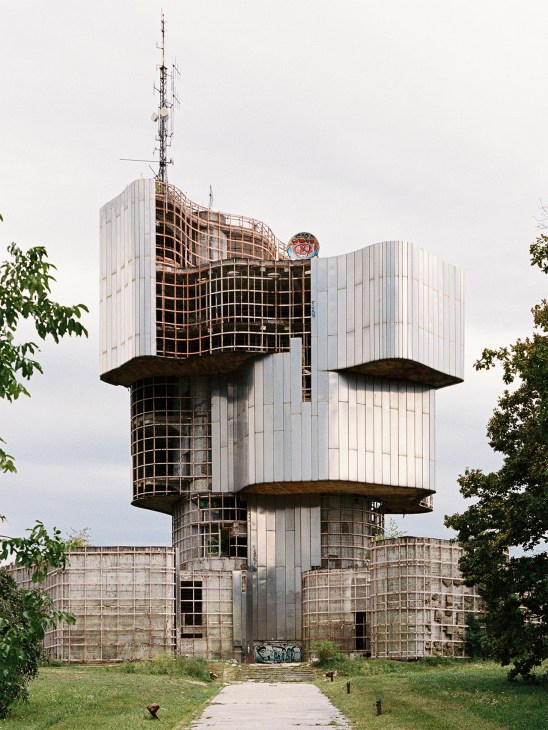
This period was followed by growing international interest, culminating in the 2018 exhibition Toward a Concrete Utopia: Architecture in Yugoslavia, 1948-1980 at New York’s Museum of Modern Art. Suddenly, spomeniks were the subject of articles bearing inane headlines such as “No, these are not made by aliens!” Meanwhile, US historian Donald Niebyl wrote The Spomenik Monument Database, a comprehensive guidebook. His research moved the conversation beyond mere aesthetic curiosity and towards an understanding of the significance of the spomenik programme.
“It’s interesting that spomenici have become a topic of objectification or Western fetishisation,” says architect Vernes Causevic, who works in the UK, Bosnia and Herzegovina, and across the Balkans. “The conversation has been more about their visual appeal than what they symbolise, which is more important: the anti-fascist movement of the Second World War. These structures aren’t just objects. They also provided regular educational programmes to build a unified state. To see them as mere structural forms is a limited way of looking at them.”

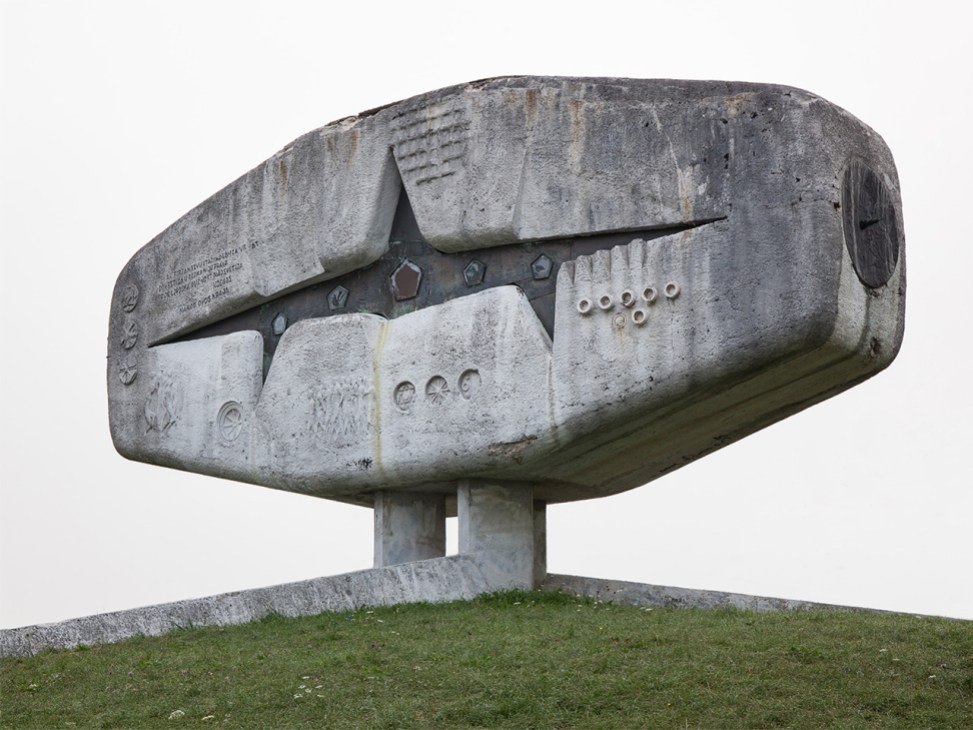
With his partner, Lucy Dinnen, Causevic runs Project V Architecture, a practice that weaves layers of history into its projects, be it the Most Mira peace centre in Bosnia and Herzegovina or a residence in Sarajevo. “Political context matters,” says Dinnen. “We talk about architecture as a methodology for peace-building. At Most Mira, we’re bringing together engineers and builders from different parts of the country and mixing building materials that include earth from sites in divided communities in the area. It’s a message to start anew, to find a way forward by working together.”
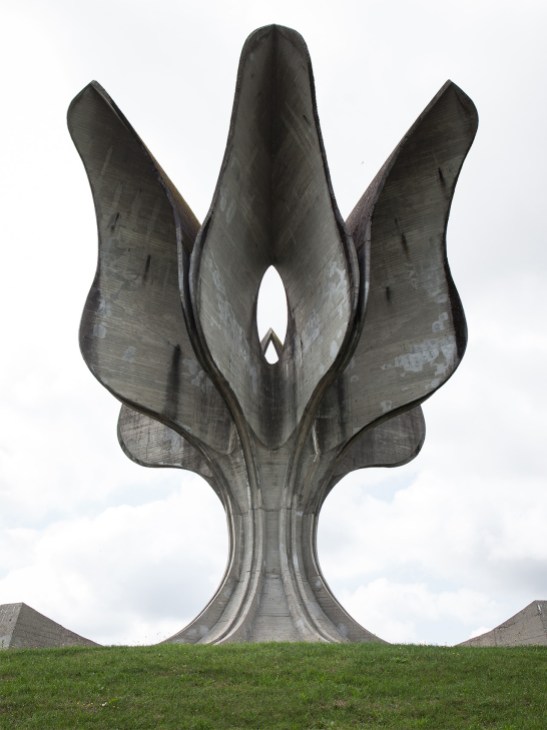
It’s an approach to architecture that echoes the idealism of the spomeniks. Today, their future remains uncertain as the issue of preserving them moves in and out of public consciousness. Though their fate is in limbo, the lessons that they offer remain relevant at a time when overcoming societal division is becoming a greater priority in the Balkans and beyond. “Forgetting a memorial is tragically ironic,” says Causevic. “The abandonment of the spomeniks is disappointing because they are a crucial part of our heritage.” Of course, the Tito regime that sought to commemorate the struggle against a murderous ideology itself became brutal. But the need to contend with the history that these monuments embody remains urgent. As they have always done, the spomeniks contain stories of hardship and peace, horror and forgiveness – the past and the future all at once.


